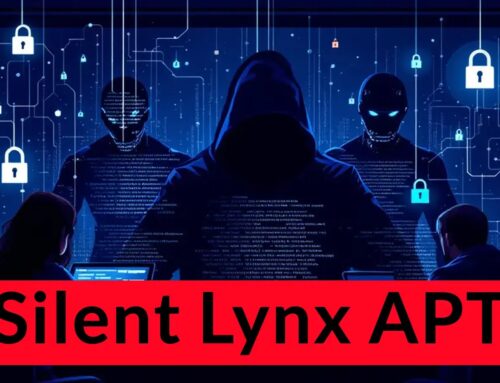
New HTTP Smuggling Attack Technique Let Hackers Inject Malicious Requests
Web applications are the lifeblood of modern business, but their intricate architecture often harbors subtle vulnerabilities. A newly identified HTTP request smuggling technique, leveraging malformed chunked transfer encoding, has emerged as a significant threat. This sophisticated attack allows malicious actors to inject unauthorized requests, bypass security controls, and potentially wreak havoc on web applications. As cybersecurity analysts, understanding and mitigating this nuanced attack vector is paramount.
The Anatomy of an HTTP Smuggling Attack
HTTP request smuggling exploits a fundamental discrepancy in how different components of a web application parse HTTP requests. In a typical web architecture, a front-end proxy server (like Nginx, Apache, or a load balancer) forwards client requests to a back-end application server (e.g., Node.js, Python Flask, Java Spring). The problem arises when these two components interpret the boundaries of an HTTP request differently.
This particular technique specifically targets inconsistencies in the parsing of HTTP chunked transfer encoding. Chunked encoding is a mechanism used to send data in a series of chunks, each preceded by its size in hexadecimal. A standard HTTP request might look like this:
- Front-end server parses the request body correctly based on the
Content-LengthorTransfer-Encoding: chunkedheader. - Back-end server also processes the request, but a subtle difference in its parsing logic, particularly regarding malformed chunked extensions, can lead to it misinterpreting where one request ends and another begins.
The core of this new smuggling method lies in crafting specifically malformed chunked transfer encoding extensions. While the front-end server might ignore or normalize these malformations, the back-end server might process them in a way that causes it to truncate a legitimate request prematurely, leaving trailing data that it then interprets as the beginning of a new, malicious request. This “leftover” data becomes the smuggled request.
How Malformed Chunked Encoding Bypasses Security
The beauty and danger of this technique lie in its ability to bypass established security controls. Web application firewalls (WAFs) and intrusion prevention systems (IPS) are designed to inspect incoming requests for malicious payloads or patterns. However, if the malicious portion of the request is “smuggled” within what appears to be a legitimate, albeit malformed, chunked body, these security mechanisms may fail to detect it.
When the front-end proxy processes the initial request, it may appear benign. It’s only once the back-end server misinterprets the malformed chunking that the hidden, malicious request is “unveiled” and processed as an independent instruction. This allows attackers to:
- Inject unauthorized secondary requests.
- Bypass authentication and authorization mechanisms.
- Access internal APIs or resources.
- Perform cache poisoning attacks.
- Execute cross-site scripting (XSS) attacks.
- Perform SQL injection or command injection.
The specific details of this attack vector highlight the critical need for consistent and robust HTTP parsing across all components of a web application’s architecture. The lack of a universally strict interpretation of malformed HTTP specifications creates fertile ground for such smuggling exploits.
Remediation Actions for HTTP Smuggling
Mitigating HTTP request smuggling attacks, especially those leveraging malformed chunked encoding, requires a multi-layered approach. Proactive measures and careful configuration are key to closing this sophisticated attack vector.
Configuration and Updates
- Consistent HTTP Parsing: Ensure that all components in your web application stack (front-end proxies, load balancers, WAFs, and back-end application servers) adhere to the same, strict interpretation of HTTP specifications, especially regarding
Transfer-EncodingandContent-Lengthheaders. Prioritize servers and proxies that strictly comply with RFC 7230 and related specifications. - Patching and Updates: Regularly update and patch all web servers, application servers, and proxy software to their latest versions. Vendors often release patches that address parsing inconsistencies and vulnerabilities like this.
- Disable Unnecessary Features: If chunked transfer encoding is not strictly required for your application, consider disabling it on the affected components. This might not be feasible for all applications but eliminates a potential attack surface.
Security Controls and Monitoring
- WAF Configuration: While WAFs can be bypassed, a well-configured WAF can still provide a layer of defense. Configure your WAF to normalize HTTP requests aggressively and to detect common attack patterns, even if they are subtly smuggled. Look for WAF rules that specifically address header ambiguities.
- Traffic Normalization: Implement a strategy where either the front-end or the back-end server explicitly normalizes HTTP request headers and bodies before processing. A common recommendation is for the front-end to normalize requests before forwarding them to the back-end.
- Rate Limiting and Anomaly Detection: Implement robust rate limiting and anomaly detection systems to identify unusual request patterns, such as multiple requests seemingly originating from a single client connection or an unexpected increase in error responses from the back-end.
- Logging and Monitoring: Enhance logging to capture full HTTP request headers and a portion of the body (while being mindful of PII). Regularly review logs for suspicious activity, unexpected error codes, or signs of request truncation or multiple requests within a single connection.
Development Practices
- Secure Coding: Developers should be aware of HTTP parsing ambiguities and ensure that their application code does not implicitly trust request boundaries defined solely by upstream proxies. Always validate input thoroughly.
- Penetration Testing: Conduct regular penetration tests that specifically include tests for HTTP request smuggling vulnerabilities. Specialized tools can help identify these subtle discrepancies.
Relevant Tools for Detection and Mitigation
Identifying and mitigating HTTP request smuggling requires specialized tools that can analyze HTTP traffic and exploit parsing differences.
| Tool Name | Purpose | Link |
|---|---|---|
| Burp Suite Professional | Comprehensive web vulnerability scanner and proxy; includes features for testing HTTP request smuggling. | https://portswigger.net/burp |
| Amass | Performs network mapping and discovery that can indirectly help in identifying disparate server configurations. | https://github.com/owasp-amass/amass |
| Nmap (Scripting Engine) | Network scanner with scripting capabilities; can be used with custom scripts to test for HTTP vulnerabilities. | https://nmap.org/ |
| ZAP (OWASP Zed Attack Proxy) | Free, open-source web application security scanner; can be used for passive and active scanning of HTTP ambiguities. | https://www.zaproxy.org/ |
Conclusion
The emergence of this new HTTP smuggling technique, exploiting malformed chunked transfer encoding, underscores the continuous cat-and-mouse game between attackers and defenders. It highlights that even seemingly minor inconsistencies in protocol parsing can lead to significant security vulnerabilities. By understanding the underlying mechanisms of this attack, implementing consistent parsing across the entire web application stack, regularly patching systems, and employing robust monitoring and testing, organizations can significantly reduce their exposure to this sophisticated threat. Proactive security measures are not just recommended; they are essential for maintaining the integrity and availability of web applications in an ever-evolving threat landscape.





